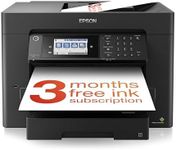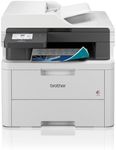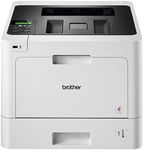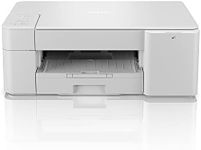Buying Guide for the Best Budget Printers
When choosing a budget printer, it's important to consider what you'll primarily be using it for, such as printing documents, photos, or both. Budget printers can vary widely in terms of features and capabilities, so understanding the key specifications will help you find the best fit for your needs. Consider the cost of consumables like ink or toner, as these can add up over time. Also, think about the connectivity options and whether you need additional features like scanning or copying.Print TechnologyPrint technology refers to the method a printer uses to produce text and images on paper. The two main types are inkjet and laser. Inkjet printers are versatile and can handle a variety of media types, making them ideal for photo printing and color documents. Laser printers, on the other hand, are typically faster and more cost-effective for high-volume black-and-white document printing. If you need vibrant color prints, an inkjet might be better, but for mostly text documents, a laser printer could be more economical.
Print SpeedPrint speed is measured in pages per minute (PPM) and indicates how quickly a printer can produce pages. This is important if you need to print large volumes of documents quickly. For occasional home use, a lower PPM might be sufficient, but for office settings or frequent use, a higher PPM can save time. Consider your typical print volume and how often you need to print in a hurry to determine the right speed for you.
Print QualityPrint quality is determined by the printer's resolution, measured in dots per inch (DPI). Higher DPI means better quality prints, which is crucial for photos and detailed graphics. For text documents, a lower DPI might suffice, but if you plan to print images or need professional-looking documents, look for a printer with a higher DPI. Assess what you will be printing most often to decide the level of quality you need.
Connectivity OptionsConnectivity options determine how you can connect your devices to the printer. Common options include USB, Wi-Fi, and Bluetooth. Wi-Fi connectivity allows for wireless printing from multiple devices, which is convenient for home or office use. USB connections are straightforward but limit you to printing from one device at a time. Consider how you plan to use the printer and whether you need the flexibility of wireless printing.
Operating CostsOperating costs include the price of ink or toner cartridges and the printer's energy consumption. Some printers have low upfront costs but expensive consumables, which can add up over time. Look for printers with affordable and readily available cartridges. Consider how often you'll be printing and calculate the long-term costs to ensure the printer remains economical.
Additional FeaturesAdditional features like scanning, copying, and faxing can add versatility to a printer. If you need these functions, look for an all-in-one printer. However, if you only need to print, a basic model might suffice. Consider your specific needs and whether these extra features will be beneficial or if they might just add unnecessary complexity and cost.

















